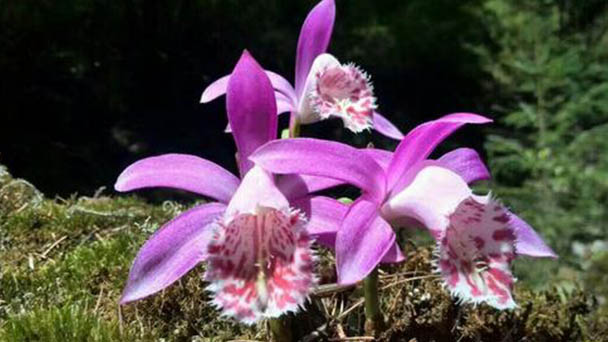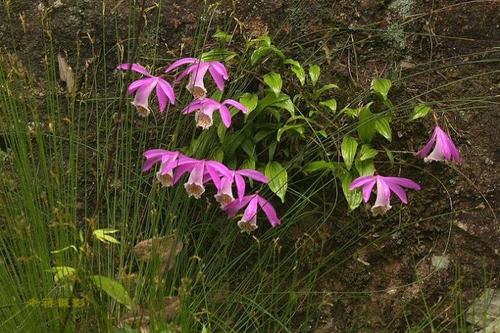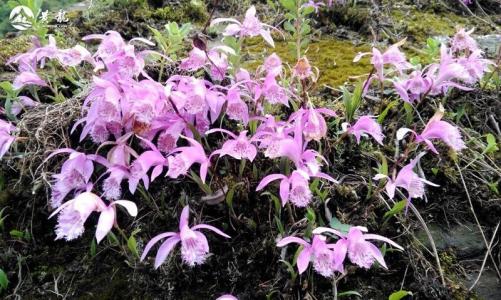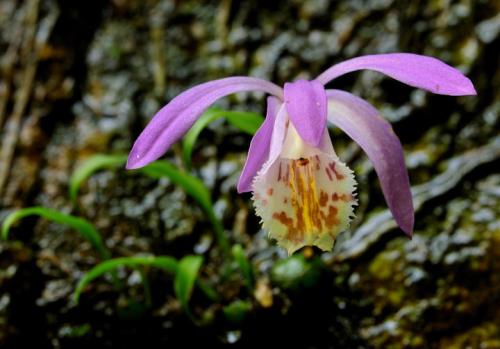Pleione bulbocodioides profile
Written by Maggie
Mar 16 2021

As Pleione bulbocodioides, a leaf develops next to the blossom and is called an orchid, and Pleione Bulbocodioides is named after the fake bulb like garlic. Pleione Bulbocodioides, usually codioides, grows in the forest above 900 meters above sea level, with a height of 10-25 cm. Its flowers are similar to Cartesian, rich in colors and many varieties, making it a nice small potted flower. Pleione bulbobulbs, or "garlic" as it is called, are also crude and detoxify or codioides.
Pleione Bulbocodioides picture

Pleione Bulbocodioides propagating methods
To propagate by sowing or dividing plants. Due to hypodevelopment of embryos, Pleione Bulbooides can only be planted in the media under aseptic conditions, and the reproduction of Pleione Bulbooides depends on the natural arrangement of pseudobulbs.Reproduction should be carried out after the fall of some seedlings on the ground and when the false bulb is dormant. Watering of newly transplanted plants should be controlled to prevent false bulbs from rotting.Thin fertilizer should be applied during the growing season.
Cultivation management of Pleione Bulbocodioides
Pleione Bulbocodioides likes a cool and ventilated semi-shade environment, hardy, does not hibernate in winter, and the minimum temperature in overwintering is above -10℃. It is recommended to be planted in loose, breathable and well-watered fern roots, water moss or humus soil. Plant with bark, broken brick pad basin floor, in January to February planting, as long as the pot soil is moist, do not immediately water, such as new roots and buds and then gradually water. Vigorous growth requires higher air temperature and soil moisture, but also care about the application of thick fertilizer. After autumn the ground part is withered and yellow, false bulb begins dormancy, should stop watering, make its safety overwintering. pleione bulbocodioides has shallow roots and finishes its life in the year in which it codifies. In spring, it grows, autumn and winter dry and die, different from the usual orchids. Therefore, it is better to use shallow basin cultivation, about 10 cm high basin, the diameter of 20 to 30 cm. The bottom of the basin needs to be well drained and breathable, and it needs to have large and most drainage holes. If you plant in a plastic pot, you must drill another drain hole in the bottom. A basin 25 cm in diameter must have 20 drain holes about 6 mm in diameter at the bottom. We can also choose the market that often happens in the shape of the sieve of the square or round small plastic basket. More drainage holes in the bottom of the pot can reduce or eliminate the pot substrate or the bottom of the pot soil filled with broken pieces or bricks. In order to prevent infection, the old flower pots must be cleaned and sterilized before being taken. Potted substrate demand for loose, permeable and good ventilation, water retention ability is also strong. As a result, garden soil and commonly used soil for potted plants are not suitable for Pleione Bulbooides. The culture matrix of epiphytic or semi-epiphytic orchids can be selected as the potted material. The potted matrix can have many kinds of ratios, and the comparison generally includes: 6 pieces of bark used for epiphytic orchids (below 5 mm, dust removed by sieve), 1 part of coarse perlite, 1 part of moss cut to grow 5 -- 6 mm, and 1 part of peat crushed. When potted, fill the lower 2/3 of the pot body with the coarser particles above, and fill the upper part with the thinner ones.
Fill the sides of the new false bulb with tiny bark patches and shorter moss. Peat soil with relatively high humus and fiber content, leaf mould and 1/2 bark block (diameter less than 5 mm) or perlite with some coarse particles can be combined to form potted substrates as Pleione Bulbocodioides. In addition, moss Xue add broken bricks, charcoal blocks (diameter of 3 -- 5 mm) each 1/2 prepared into the pot matrix is also compared well. Pleione Bulbooides, potted in moss, has also been codified in reply with great satisfaction. Adding a small amount of coarse sand to the potted matte will help stabilize the planting of Pleione Bulbooides in the basin, and will not be unstable because of too light and loose cultivation of the matte. Too much sand or brick will also make the matrix too dense, hindering the growth of the root system. Small quantities of decaying hair or leaves from a tree or dried cow dung can be helpful in preparing Pleione Bulbocodioides.

Origin and habitat of Pleione Bulbocodioides
On humus rich soils or moss-covered rocks under evergreen broad-leaved forests or shrub margins, 900-3600 m above sea level. It is originated from South Shaanxi, South Gansu, Anhui, Hubei, Hunan, North Guangdong, North Guangxi, Sichuan, Guizhou, Northwest Yunnan and Southeast Xizang. Model specimens were collected from Baoxing, Sichuan province.
Growth habit of Pleione Bulbocodioides
Pleione Bulbocodioides prefers cool, ventilated semi-shade environment, relatively cold resistant, winter does not hibernate, the minimum temperature over winter -10℃,
Pleione Bulbocodioides should be planted in loose, breathable and well drained fern roots, water moss or humus. Pleione Bulbocodioides is native to temperate and subtropical high elevations. It likes the climate with distinct seasons. It's better not to exceed 25 degrees Celsius in summer. The high temperature of 30°C is tolerable occasionally for a few days. Winter dormant period, temperature requirements near freezing point. That's the ideal 1 to 5 degrees Celsius. The temperature is basically the same as in a refrigerator. After resting for a period in low temperature coioides, Pleione Bulbocodioides produces buds. The Pleione Bulbooides potted planting season is flexible. In Harbin, China, it's possible to plant outdoors in spring and summer and hibernate in a refrigerator in winter. If you plant it in Guangzhou, you can plant it outside in winter and spring and put it in the refrigerator in summer to sleep. Be sure to know the local temperature when planting out of season. Control watering ahead of time and gradually cut off the water. If the water is cut off early, the proper growing period will be wasted. If it is late, the plant encounters high temperatures. Pleione Bulbocodioides often cannot enter hibernation normally and die suddenly.

Latest Updated
- Benefits of Bugleweed - 7 Science-backed Health Benefits
- Bugleweed Dangers & Side Effects - Is It Poisonous?
- How to Plant Evergreen Trees - What You Should Know
- When to Plant Evergreens - Grow Guide for Evergreen Trees
- 12 Wonderful Evergreen Shrubs for Your Garden
- 12 Popular Evergreen Plants with Pictures for Beginners
- When And How To Prune A Lilac Bush Like a Pro
- How to Grow & Care for Lilac Vine (Hardenbergia Violacea)
- Japanese Lilac Tree (Syringa Reticulata) Care & Propagation Guide
- Shumard Oak Pros and Cons - What to Know
Popular Articles
- Winter maintenance of Antirrhinum Majus
- How to Grow Terminalia Mantaly Tree
- How to Grow and Care for Crossostephium Chinense
- How to grow Antirrhinum Majus in spring
- Peristeria Elata (Dove Orchid) Profile: Info & Care Guide
- Underwatered Snake Plant (Sansevieria Trifasciata) - Signs And How To Fix
- How to Care for Brazilian Jasmine Plant (Mandevilla Sanderi)
- How to Grow & Care for Graptopetalum Purple Delight in Summer
- Rosa Chinensis (China Rose): Plant Growing & Care Tips
- How to Care for Baby Sun Rose (Aptenia Cordifolia)